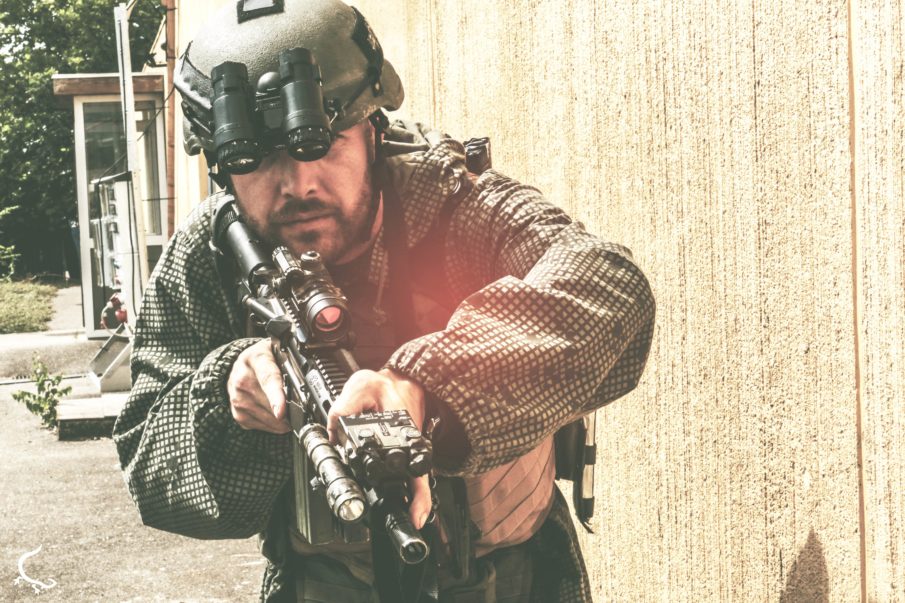A compressed environment is perhaps one of the most dangerous and relentless setting you can deal with in CQB.
It can be inside of a car, suburban terrain, a corridor or a room – the principle is simple, a tight environment without many possibilities and a quick cause-effect relationship.
The main issue with compressed environments is the tight angles and the influence they have on our ability to earn the shot (establishing an angle on a threat while another shooter is in priority) Further more, from a behavioral point of view, the individual will experience a greater mental load as they are forced to find solutions in short intervals.
Some considerations worth looking through when working in compressed environments.
- Your system setup, with focus over the barrel & accessories. For example, many guys tend to place their mounted laser or flashlights in the wrong position on the gun, limiting their devices performance or increasing exposure of the weapon around corners.
- Sling. Get a good one and don’t let it hinder you. Make sure it isn’t flying around loose. Ensure that it doesn’t get caught on your gear or the environment
- Flashlights & improper placement of PTTs
- Muzzle awareness, not only for safety reasons but telegraphing your position as well. Don’t let the enemy gain a visual advantage.
- Any loose items like dump pouches, straps, etc should be secured. Don’t let those frames, closets, door handles and other stuff on the wall the grab you!
- Pre-planned evacuation procedure. Think of it as if an ally is wounded and their body blocks the hallway. What next? Can he self-extract? Can the team keep pressure on the threat while a proper extraction is taking place?
- There is no unemployment in CQB. Dig your corners and earn that angle.
One of the greatest benefits of fighting from the door in a compressed environment is that we have the ability – by default – to fight from cover, and to know what our next move is going to be. In terms of violent encounters, that will allow an officer who just engaged or eliminated a threat to stop, breathe and prepare himself mentally for their next move.
Often, in settings like in the video below, moving quickly into rooms (in the majority of contexts) will result in an injury. You can’t be too careful, it is all about increasing your chance of survival.
Disclaimer : The video was conducted with a student who was just introduced to this methodology. Mistakes are made and that is why we recorded this video. Got questions? Hit us up.
https://www.youtube.com/watch?v=YqRUhmDL_2M
Already have an account? Sign In
Two ways to continue to read this article.
Subscribe
$1.99
every 4 weeks
- Unlimited access to all articles
- Support independent journalism
- Ad-free reading experience
Subscribe Now
Recurring Monthly. Cancel Anytime.









